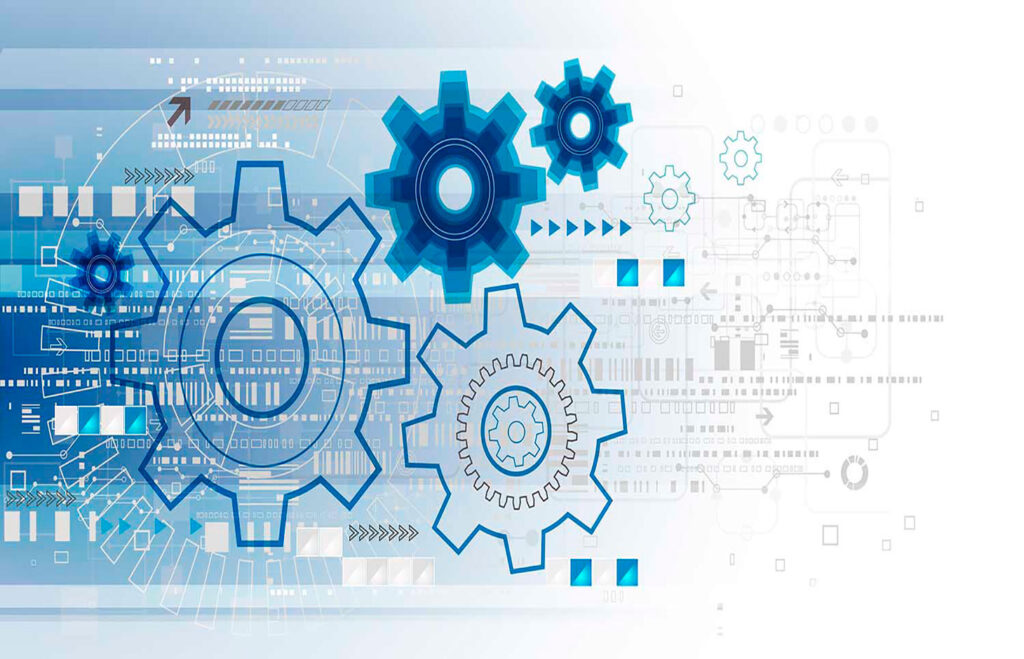When it comes to tech, even very good tools are only as useful as they are communicative. You need your CRM, you need your billing automation tools, and your ERP. You also need them to be able to work together, just as surely as you need the distinct departments of your business to be able to collaborate.
You don’t want your tools to be clunky and incompatible. You want them to function seamlessly so that you don’t even have to think about them. As Bill Gates said, “The advance of technology is based on making it fit in so that you don’t really even notice it.”
The right integrations make this possible. Good billing software can serve as a bridge for your CRM and ERP, seamlessly communicating information, while also filling in service gaps to ensure that your business has everything it needs to operate at full capacity.
Aiding with the quote to cash process
Even the best CRMs can’t always offer comprehensive support that covers the entire quote to cash process, especially as it pertains to the average subscription business. This is important because more than half of the quote to cash sales cycle occurs independently, as the customer researches their options and thinks about their decision privately. Your sales team has a relatively small window of time to convert a lead into a sale. Even small delays can be the difference between success and failure.
While the CRM is there for leads and sales support, it can often lag where the billing system is concerned.
With a billing platform integration, you can access the functionality of your billing software without ever leaving the CRM interface.
Once the customer commits, their data needs to be entered into the billing system for revenue to be collected. Switching between systems to re-enter it manually causes delays and introduces the potential for error. With automation, it all happens immediately, making things easier for your staff and your customers.
These particular subscription billing integrations are meaningful because they allow your sales staff to log client billing and subscription information directly into the CRM, an environment they’re certainly more accustomed to. Plus, this data entry only needs to be done once: it’s now funneled directly to the billing system via the integration, ensuring everyone gets complete and effortless access to the information they need.
Automated billing platforms pair with CRMs in the quote to cash process by:
- helping to bring customers to the commitment point, then
- automating the acquisition of payments, and
- automating the deposits of payments on a regular basis.
It’s also worth mentioning that a good billing platform not only helps with subscription management but also adds a level of security to your transactions that CRMs alone cannot provide. PCI standards help ensure safe credit card transactions online.
While CRMs do not possess the tools required for PCI compliance independently, you can take advantage of secure payment gateways and other security features native to a good automated billing system to effortlessly become compliant.
Billing software + CRM: Data flows both ways
Data runs through CRMs to the billing platform to assist with billing and invoicing while maximizing the efficiency of the cash flow process. However, the reverse can also be true. Data from your billing software can also be used to push catalog information to sales in the CRM.
If a prospect is interested in a specific product or plan, your sales team can use the billing platform integration to tie this catalog information to the lead’s data, simplifying the quote to cash process even more. They can even adjust catalog pricing and give discounts directly within the CRM, allowing them to have more flexibility as they make their sales.
Your integration can then funnel catalog updates and adjustments back to the billing department in case they need to go through a review process before being uploaded.
It’s also worth noting that billing integrations can help you sell to existing customers. Through customer account tracking interfaces, your sales team can benefit from real-time reporting on historical account information that can be used to generate new cross and upsell opportunities. While up to 70% of a business’s revenue can come from upsell opportunities, they aren’t always easy to find.
Teams that can successfully identify receptive clients, however, benefit from an almost 70% chance of success.
Billing software as a bridge to your ERP
Once a customer has been processed through the CRM, your recurring billing software can be used to sync the data over to your ERP. This means
- invoices,
- general ledgers and any recognized revenue,
- and more
…are also copied automatically over to the ERP. Certainly, it makes your billing team’s job easier.
But there’s another benefit that’s particularly handy for businesses that sell physical goods in addition to subscription products. For them, this exchange of information makes it very easy to monitor inventory automatically.
Say you are an IoT company. You sell technology devices that are accompanied by a recurring cost to activate the tech. Your sales team closes a deal. They plug the information in through the CRM, it’s communicated to the billing platform, which then talks to the ERP. From there, your inventory is automatically adjusted to reflect the new transaction.
Inventory management features can also be specially calibrated to account for non-revenue-based items that don’t have their own serial number—things like wires, cables, and other accessories. Not only does this approach require significantly less human effort as it relates to inventory management, but it also makes the entire process more accurate by streamlining communication across systems.
These integrations are also a convenient asset for your accounting or billing department, which can comfortably submit any information that is needed from them all on a single platform. Not only does this reduce the capacity for error, but it also accelerates the workflow, and makes life easier for your staff.
Seamless cooperation magnifies the benefits of automation
The next time you’re driving, look at any expansive street and it’s almost impossible to see all of the little dips and rises or the gradual hills. These features are there, of course, as they are with any landscape, but they’ve been smoothed out, buried beneath layers of concrete, and steamrolled into seamless perfection.
So it is with a well-integrated tech stack. Your business will rely on a wide range of different tools because that’s the best way to meet your diverse range of needs. You just don’t want your tech stack to feel disconnected.
Data siloes and accessibility pain points are productivity killers that make your business less agile and more prone to frustration. You don’t want that. You pay good money for your tech. With the right integrations, you can make sure you get the most out of all of it.








